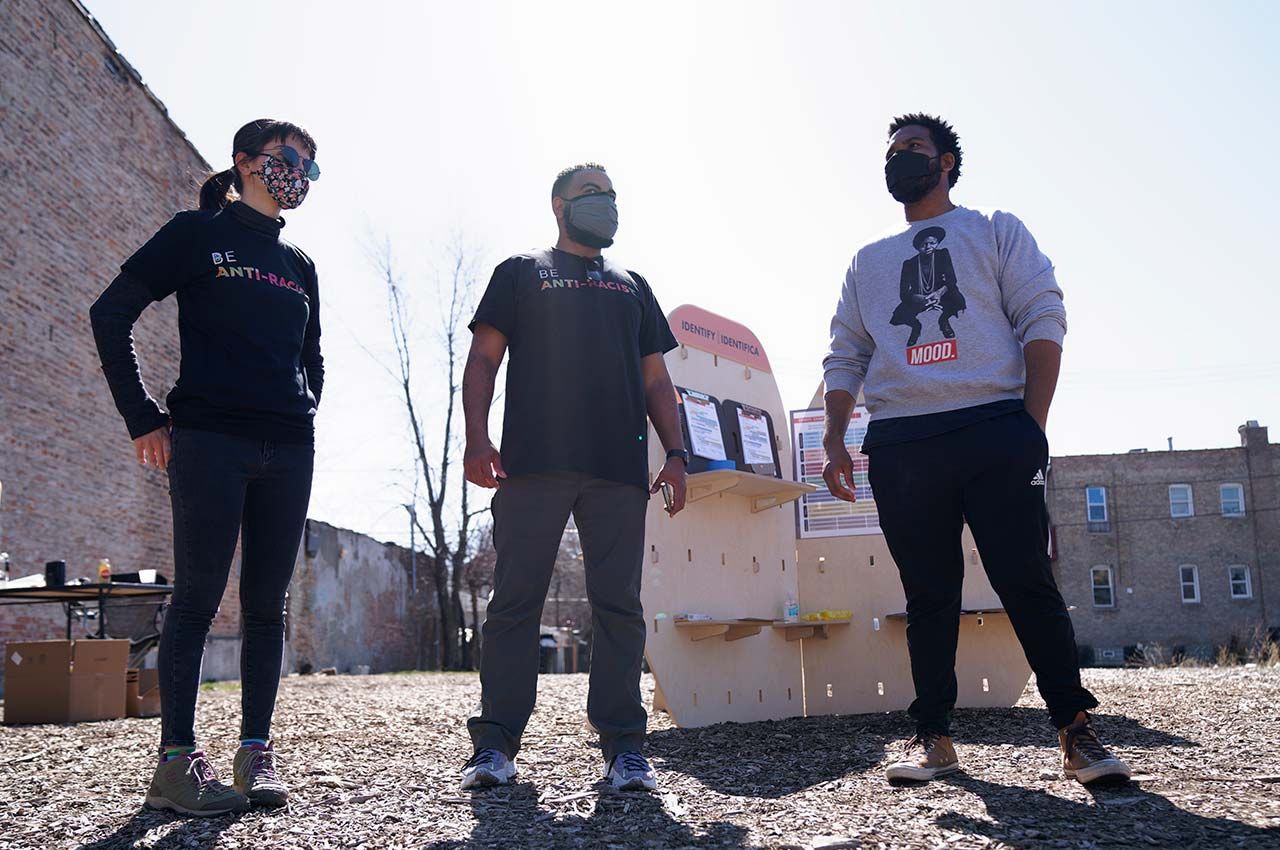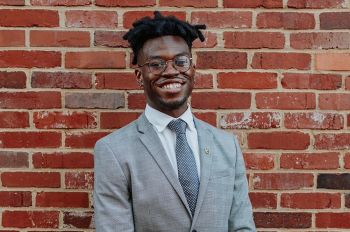Institute of Design Faculty and Students Coordinate Anti-Racist Pop-Ups in Chicago

As a faculty member and researcher at the Institute of Design, Chris Rudd is dedicated to creating design tools and frameworks in pursuit of anti-racist outcomes. In Rudd’s view, these frameworks can benefit designers and non-designers alike and create sensible and equitable solutions to complex problems.
As such, Rudd, along with four ID students, facilitated three anti-racist pop-ups to bring new design methods to Chicago communities. His stated goal? Not to have a single “professional” designer show up.
“There’s a huge racial gap in the design field. Only 3 percent of designers are Black in this country,” says Rudd. “I didn’t find out about the field until I was in my 30s. So how do we increase exposure and access? That’s part of what these pop-ups aim to do.”
Partnering with local Black- and brown-owned businesses, such as Friistyle Chicago and Birria Ta-Ta-Tacos, Rudd and ID students set up their design pop-ups in neighborhoods across Chicago, bringing communities, stakeholders, and experts together. The team sought to locate their pop-ups on the precipice of segregated neighborhoods to create what Rudd calls “integration zones.”
“This is where design becomes an enabler for integration: bringing disparate groups together—groups who themselves are different—to help them create something that’s new,” says Rudd. “We want to bring these folks together so they know they have very similar issues when it comes to race and racism. They feed off of each other to design anti-racist infrastructures. I believe that the anti-racist, equitable future we all deserve will be created by the people and that design can support the development of that future.”
The framework that Rudd developed for the pop-ups follows a three-part process, facilitated by worksheets:
- Participants identify how racism exists in their lives.
- Participants imagine an equitable future where that racism no longer exists.
- Participants imagine what anti-racist infrastructure needs to exist to enable that future.
“We reworked complex frameworks, such as policy design or an organizational structure, into visual materials that people could easily interact with,” says Azra Sungu (Ph.D. Candidate), the research assistant for the project. “We noticed that we were able to provoke new perspectives and deep reflection as people began to collectively react to these materials and discussed among themselves, despite the whole process being presented in a worksheet formatted for individuals.”
The three pop-ups took place between March and May in three Chicago neighborhoods: Logan Square, Bronzeville, and Garfield Park. Overall, they engaged approximately 80 individuals.
“The experience of racism is overwhelming, and it is easy to lose sight of an alternative reality. The unique value of this project was to see the diversity of anti-racist actions that people envisioned, how they aligned in their aim to tear down the construction of racism, and how people are the protagonists of equitable futures,” says Sungu. “I think the greatest impact was to make people feel that a future where racism no longer exists is indeed possible and that we are the ones who need to build it.”
Photo: Institute of Design faculty member Chris Rudd [center] is pictured at one of the anti-racist pop-ups (provided)



